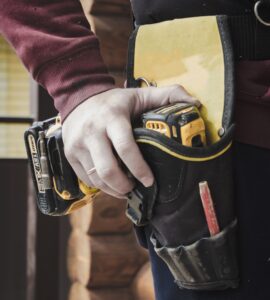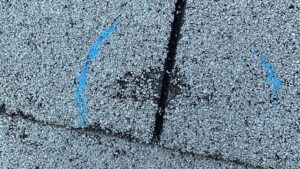Everyone needs a roof over their head, but did you know that your roof also plays a crucial role in maintaining the energy efficiency of your home? By acting as both a barrier against external weather conditions and regulating indoor temperature, you can prevent energy loss while also saving on additional energy costs. An inadequately insulated or damaged roof can result in significant energy wastage, leading to higher energy bills.
With roofs typically lasting between 15 and 25 years, advancements in technology and increased efficiency have made each roof replacement an opportunity not only for enhancing the aesthetic appeal and structural integrity of your home, but also to significantly reduce your energy consumption and save.
The Factors That Affect Your Roof’s Energy Saving Potential
Roofing materials, insulation, ventilation, and installation quality are all factors that affect your roof’s impact on energy costs.
Roofing materials
When choosing your roofing materials, consider how much impact each has on energy efficiency. The materials you choose will also depend on where you live and the climate in that area. Different materials have varying levels of thermal resistance and reflectivity, affecting how much heat is absorbed or reflected into the environment.
Consider using cool roof materials that have high solar reflectance and thermal emittance properties. These roofs reflect sunlight and emit absorbed heat more efficiently, keeping the inside cooler.
Insulation
Next, you will want to look at the quality and effectiveness of the insulation in your roof. Proper insulation can have a huge impact on energy efficiency just by minimizing heat transfer between the interior and exterior of your home. By maintaining a comfortable indoor temperature, proper insulation reduces the need for excessive heating or cooling.
Insulation materials such as fiberglass, cellulose, or spray foam can be added to your attic or roof structure to improve energy efficiency.
Ventilation
Adequate ventilation is another essential for preventing the buildup of heat within your home. Good ventilation means proper airflow which helps dissipate heat in your roof space, keeping the rest of your house cooler without the need for additional energy-hungry cooling systems.
Roof Installation
Finally, the installation quality of your roof is paramount to ensuring energy efficiency. A properly installed roof with attention to detail, sealing, and insulation techniques will minimize air leaks and thermal bridging, preventing energy loss and optimizing energy savings.
How A Newly Installed Roof Can Cut Energy Costs
Replacing your older roof is the ideal opportunity to cut your energy costs quite significantly. The latest roof materials on the market offer more energy efficiency and durability, adding up to extra savings in the long term.
Installing a new roof also gives you the chance to add or replace the insulation in your roof, another way to cut down on energy expenditure by reducing the need to blast your radiator or air conditioner. Modern insulation materials such as spray polyurethane foam and rigid polystyrene or polyisocyanurate (polyiso) foam boards are highly insulating, very strong and incredibly durable.
Modernized shingles have been advanced to be better at keeping the wind out and have a higher metal content offering better protection against the elements. Solar reflecting shingles offer more efficiency when it comes to keeping the heat from being absorbed into your home.
Different Types of Roofing and Their Energy-Saving Potential
Let’s have a look at a few of the roofing materials best suited to an energy efficient home.
Roofing Shingles
Asphalt shingles are widely used due to their affordability and durability. However, they provide limited insulation. Reflective asphalt shingles are far more energy efficient. With a reflective surface they help to reduce heat absorption and minimize cooling needs. Best of all, solar shingles generate energy from the sun, offering you an alternative supply of energy.
Metal Roofing
Metal roofs are gaining popularity for their longevity and energy-saving benefits, but you need to choose a metal roof with a reflective coating to maximize on energy savings.
Clay or concrete tiles
Clay or concrete tiles absorb less heat than asphalt shingles and come with a reflective glaze that will reflect the sunlight off your roof, keeping your interior cooler.
Slate or synthetic slate
Slate roofs have a long lifespan and have exceptional insulation properties. They regulate temperature effectively throughout the year, reducing the need for heating and cooling systems, leading to more energy savings. Synthetic slate is cooler and has naturally reflective properties, keeping your indoor temperatures stable.
Roof Colors
The color of your shingles or roofing material also affects how warm or cool your home is. In colder climates a darker roof is more effective in absorbing the sun’s heat into your home, while in hotter areas you will want a lighter color to reflect the sun’s heat off your roof, keeping your home cool.
How Professional Installation Can Increase the Energy Efficiency of Your Roof
When installing a new roof, it is always better to choose a reputable roofing contractor to ensure proper installation.
Here’s why:
By hiring an experienced roofing contractor, you are ensuring the installation is carried out with precision while adhering to industry standards.
Professional roofers possess the knowledge and expertise to employ proper installation techniques. They understand the intricacies of the roofing system, ensuring that each component is installed correctly. This includes sealing gaps, using appropriate insulation materials, and optimizing ventilation to minimize energy loss.
Professional roofers can assess your home’s specific insulation needs and recommend the appropriate materials and thickness to optimize energy efficiency.
A reputable roofing contractor will be well-versed in the latest local building codes and regulations. They ensure that the installation meets or exceeds these standards, guaranteeing that your roof is energy-efficient and legally compliant. Compliance with building codes also ensures the longevity and durability of your roof, minimizing the need for repairs or premature replacements that can impact overall energy efficiency.
A new roof is an excellent opportunity to reduce your energy consumption and costs. Installing an energy-efficient roof isn’t much more expensive and can save you money over the long term by reducing your energy bills. Invest in a greener planet, and a more efficient home with a professional Minneapolis roofing company like Midwest Roof & Solar.





